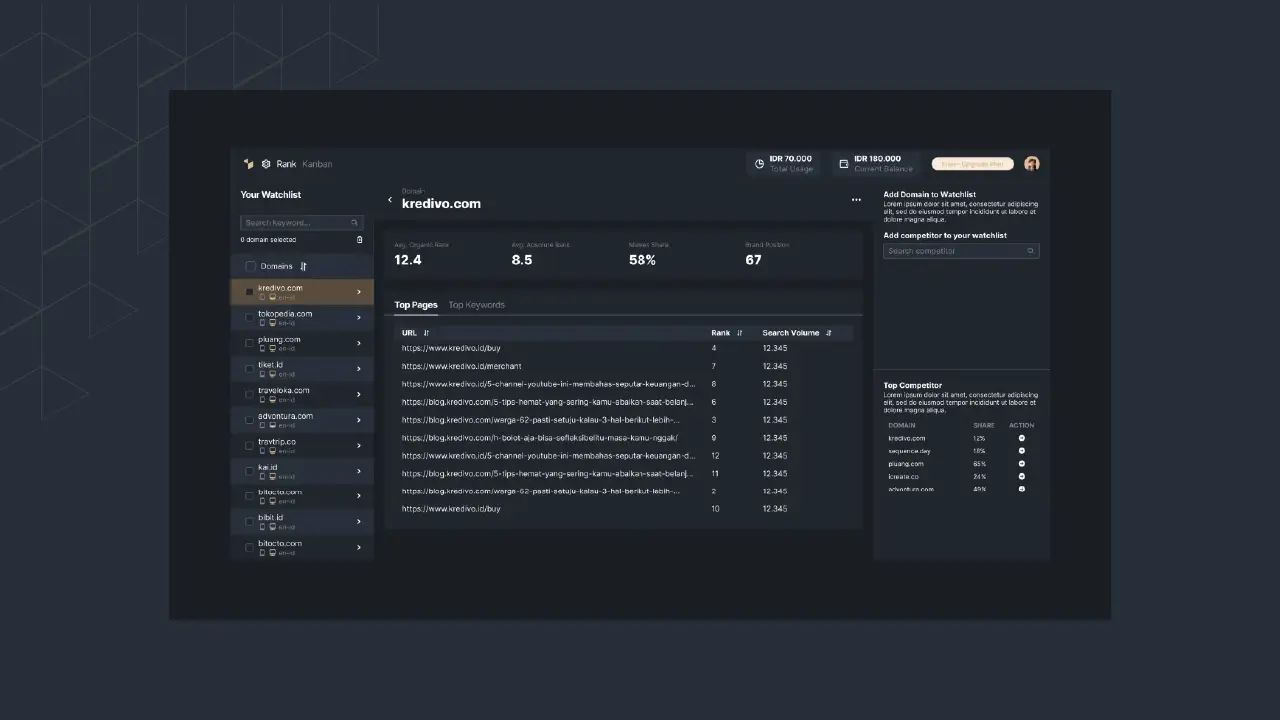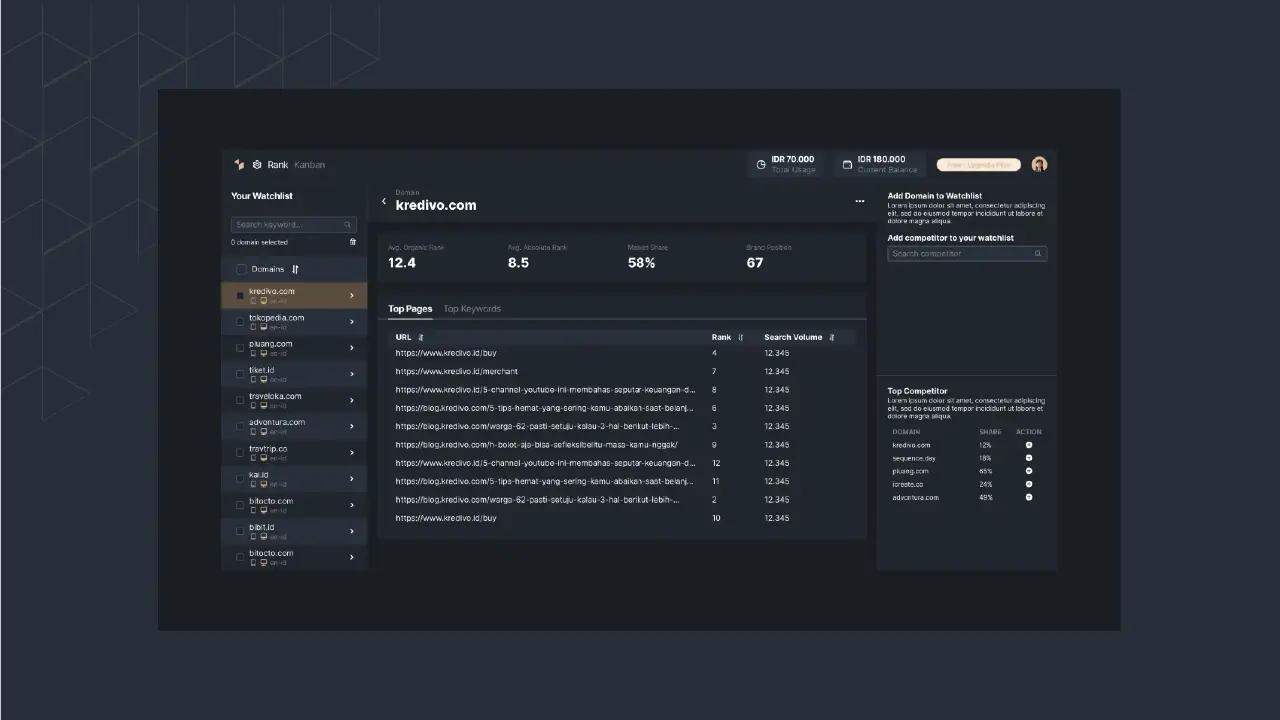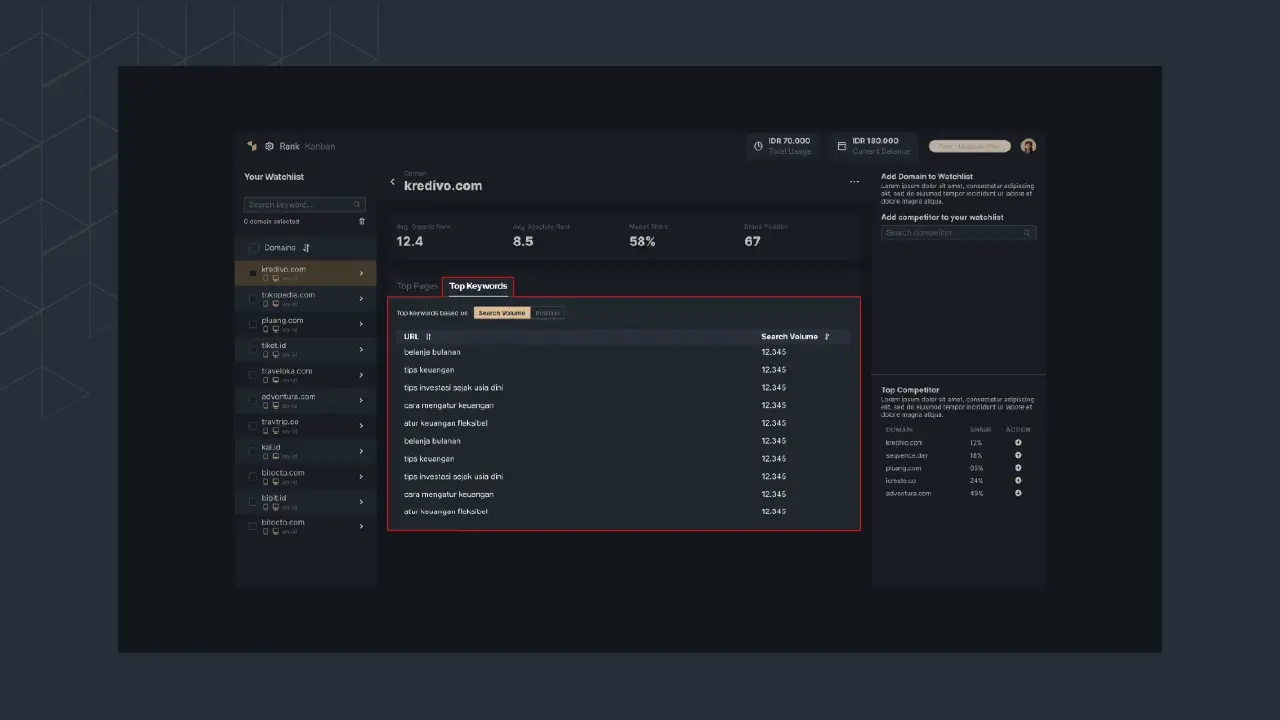Competitor keyword research is a critical component of your successful SEO strategy. By analyzing the keywords that your competitors are using to attract traffic and generate leads, you can gain valuable insights into the current trends, search behavior, and industry language of your target audience.
The main objective of this article is to explain how to beat their competitors using keyword research. Throughout the article, we will discuss different methods of conducting competitor keyword research, how to analyze competitor data, and how to use this data to inform your own keyword strategy.
By the end of this article, readers will have a clear understanding of how to leverage competitor keyword research to gain a competitive edge in their market.
What is Competitor Keyword Research?
Competitor keyword research is the process of analyzing your competitors' keyword strategy to gain insights into their SEO efforts. This research involves identifying the keywords and phrases that your competitors are using to optimize their website content, and analyzing how effective these keywords are in driving traffic to their sites.
By understanding your competitors' keyword strategy, you can identify gaps in your own strategy and optimize your website content to improve search engine rankings and drive more traffic to your site.
It allows you to gain a competitive edge by identifying the top keywords and phrases that your competitors are using. By leveraging this data, you can optimize your website content to improve search rankings and beat the competitors.

Picture 1: Illustration of competitors’ keywords
How to Do A Competitor Keyword Research
There are several methods for conducting competitor keyword research, each with its own set of advantages and disadvantages. Here are some of the most common methods:
1. Manual Research
This involves manually visiting your competitors' websites and analyzing their website content and metadata to identify the keywords they are targeting. This method is free and can provide a more in-depth understanding of your competitors' strategies. However, it can also be time-consuming and may not be as comprehensive as other methods.
Pros: Free, in-depth analysis, provides a better understanding of your competitors' strategy
Cons: Time-consuming, may not be as comprehensive as other methods
2. hird-party Tools
Third-party tools: There are several third-party tools available that allow you to analyze your competitors' keyword strategies. Those tools provide a wealth of data and can save a significant amount of time compared to manual research, but they can be expensive since you need to subscribe to get the complete data.
Pros: Saves time, provides a wealth of data, allows for analysis of multiple competitors at once
Cons: Expensive, may not always provide the most accurate data
3. Competitor Analysis Tools
There are also specific competitor analysis tools available that allow you to compare your website to your competitors' websites and analyze their keyword strategy. These tools provide a more comprehensive analysis of your competitors' strategies.
Pros: Provides a more comprehensive analysis of your competitors' strategy, allows for easy comparison of multiple competitors
Cons: Expensive, may not provide as much in-depth data as other methods
Ultimately, the method you choose will depend on your budget, the amount of time you have available, and your specific needs and goals.
4. Identify and Analyze The Data
By analyzing their keyword data, you can gain valuable insights into their keyword strategy, identify gaps in your own keyword strategy, and optimize your website content to improve your rankings. Here's how to analyze your competitor's keyword data.
Organize the data: After you collect the data using the above methods, you need to analyze it. You can organize the data in a spreadsheet, categorizing it by top keyword, competitor, and search volume. This will allow you to quickly identify patterns and trends in your competitors' keyword strategy.
Identify gaps: Once you have organized the data, you can begin to identify gaps in your own keyword strategy. Look for keywords that your competitors are targeting that you are not, and consider adding these keywords to your own strategy. Also, look for keywords that your competitors are not targeting, but that you could potentially rank for.
Optimize your strategy: Once you have identified gaps in your keyword strategy, you can begin to optimize your strategy. This may involve creating new content optimized for the new keywords you have identified or optimizing existing content to target these keywords. Make sure to track your progress and adjust your strategy as needed.
Tips for leveraging competitor keyword data:
Look for long-tail keywords: Long-tail keywords are less competitive and may be easier to rank for. Look for long-tail keywords that your competitors are not targeting and consider adding them to your own strategy.
Focus on intent: Consider the intent behind the keywords your competitors are targeting. Are they targeting keywords with commercial intent, such as product names? Or are they targeting informational keywords? Use this information to inform your own strategy.
Analyze metadata: In addition to analyzing your competitors' content, analyze their metadata, such as page titles and descriptions. This can provide valuable insights into their keyword strategy.
Those are the way you can take to analyze the keywords. Don’t forget to apply the tips we have provided to enhance your strategies.
5. Creating Action Plan
To achieve success, you need to create an action plan based on your research. Here's how to create an action plan based on your competitor's keyword research.
Set realistic goals and timelines: Before you start creating your action plan, you need to set realistic goals and timelines. These goals should be based on your research and should focus on improving your search engine rankings for specific keywords. Set a timeline for achieving these goals and make sure they are achievable.
Identify action items: Based on your research, identify specific action items that you need to take to achieve your goals. This may involve creating new content, optimizing existing content, or building backlinks to your website. Make sure each action item is specific, measurable, and achievable.
Prioritize action items: Once you have identified your action items, prioritize them based on their potential impact and feasibility. Start with the action items that will have the biggest impact on your search engine rankings and that are most feasible to achieve.
Assign responsibilities: Assign responsibilities for each action item to specific team members or departments. Make sure everyone understands their responsibilities and timelines.
Implement and measure success: Implement your action plan and measure success over time. Use tools such as Google Analytics and Sequence to track your progress and adjust your strategy as needed.
By having a clear action plan, your SEO implementation will not go astray. So, you can have a guide on what to do next after doing competitor keyword research.
Competitor Keyword Research Tool: Sequence Stats
We suggest you use an SEO tool that can cover multiple SEO tasks, especially in terms of competitor keyword research. In Sequence Stats, we have a Domain Watchlist feature that allows you to see competitors’ performance.
First, you need to log in to your Sequence Account, and then access the Domain Watchlist feature through the navbar.

Picture 2: Domain Watchlist entry point in Sequence
After that, you will see the Domain Watchlist Dashboard. If you are new to Sequence, you might need to add competitors’ domains before getting the data.

Picture 3: Domain Watchlist dashboard.
Select one of the domains from your list to see their data. The data that can be shown are quite complete. If you want to access their top keywords, you can click the Top Keyword menu.

Picture 4: Top Keywords menu in Domain Watchlist
Those are the keywords of your competitor that have a high performance. From here, you can do an analysis and build a more strategic move.
By using Sequence Stats as your all-in-one SEO tool, you can do multiple SEO tasks. Monitoring ranking, doing keyword research, competitive analysis, site audit, managing your team, and many more.
This can also be a perfect method for your competitor keyword research since it saves your time and budget. Free trial available for you.
Conclusion
In conclusion, competitor keyword research is a crucial component of any effective SEO strategy. By analyzing your competitors' keyword data, you can identify gaps in your own strategy and leverage their successes to optimize your own keyword strategy.
Remember to stay flexible and adaptable, as SEO is an ever-evolving field, and what works today may not work tomorrow. With the right mindset and strategy, you can achieve success in SEO and stay ahead of your competitors.